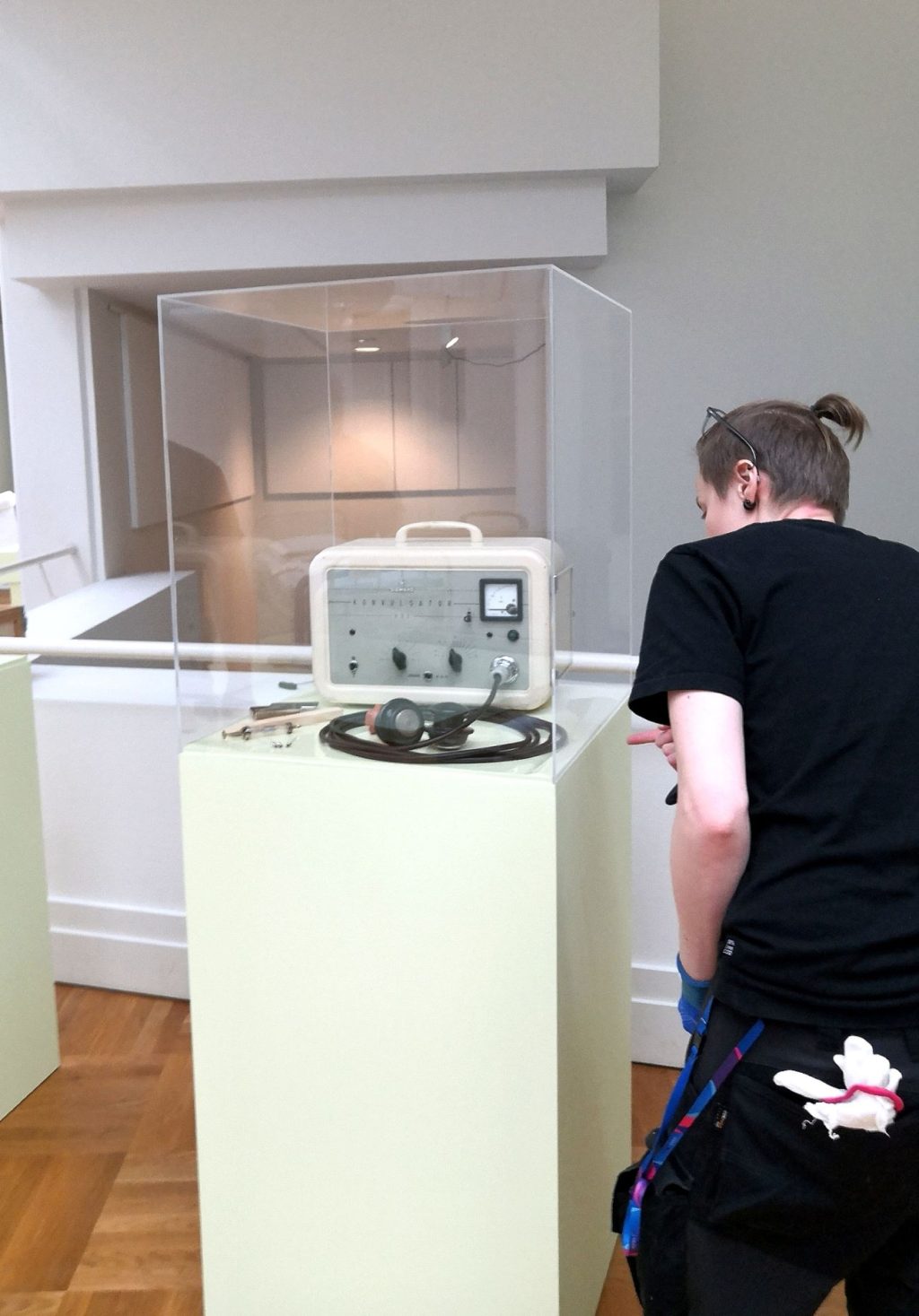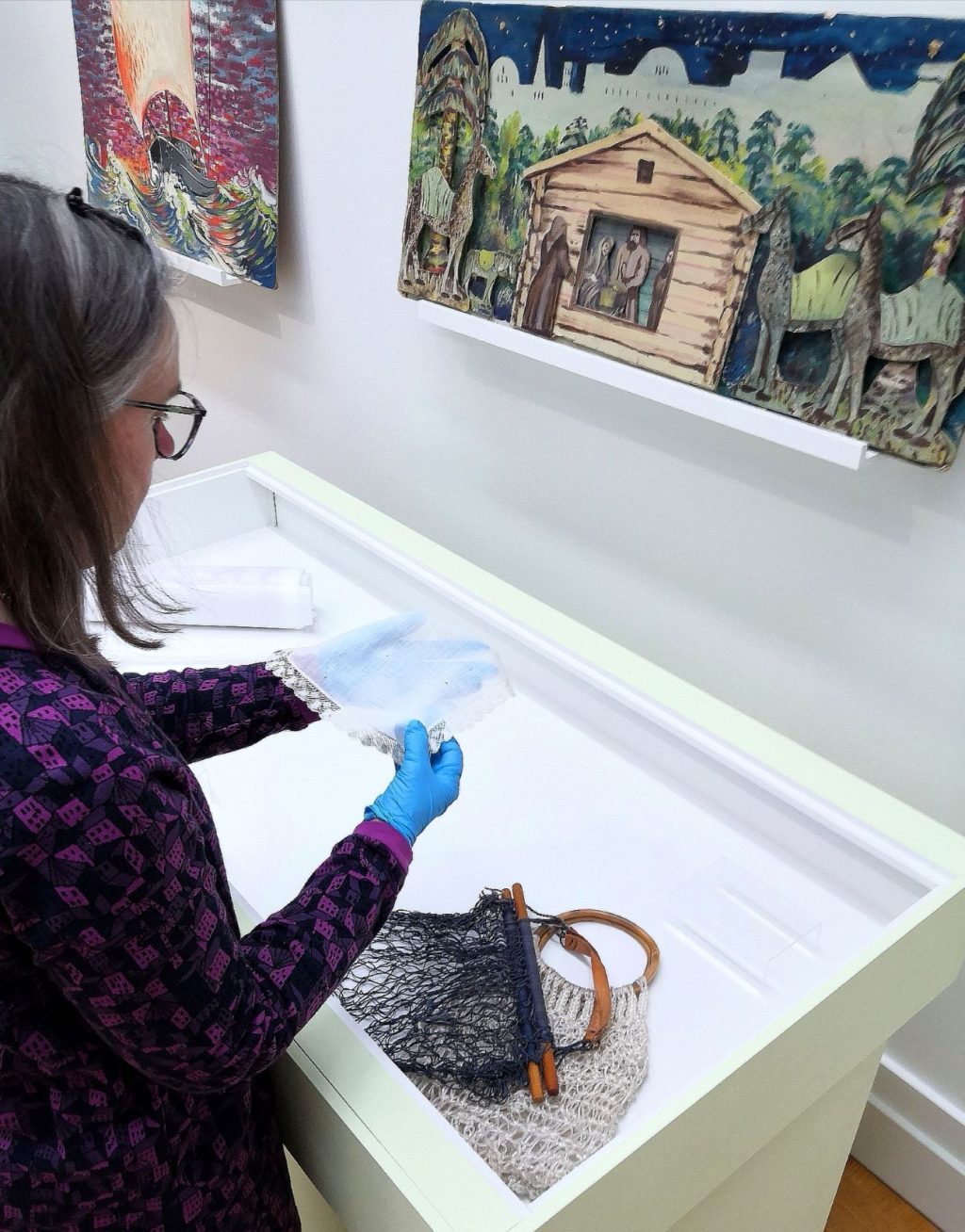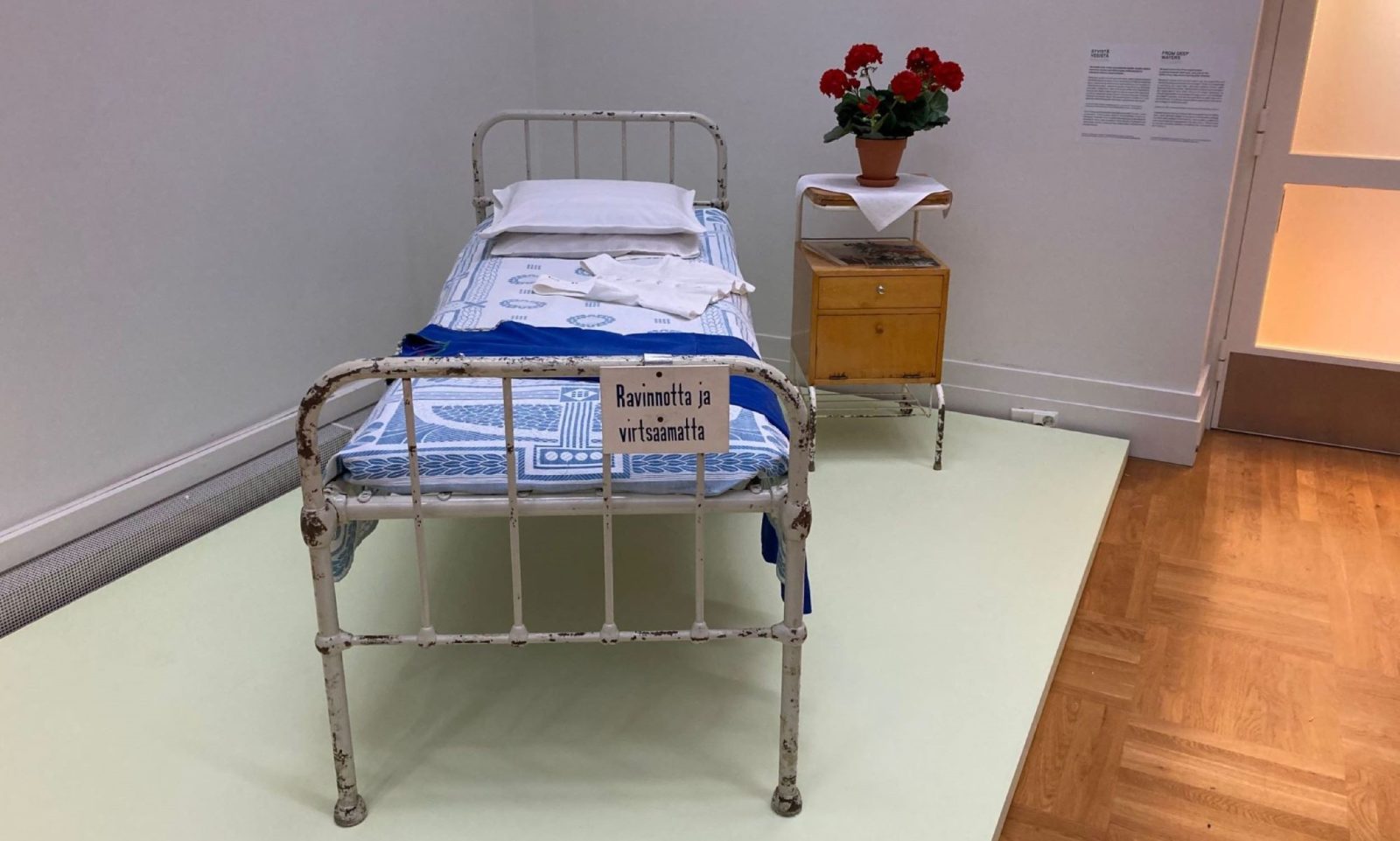Museums and art can help address difficult, painful and even scary topics. At a museum, through these challenging topics someone dealing with pain and fears may realize that they are never alone with their problems. At its best, a museum can provide an experience of being understood, and in this way create hope for the future.
These are the themes of the Oulu Art Museum’s new “Pain” collection exhibition, which includes artworks from over 80 different artists. The exhibition has been organized in collaboration with the Northern Ostrobothnia Museum and in addition to art, there are also cultural and historical objects from the collections of the Health Care Museum and Oulunsuu Hospital.
Mental health care in Finland and Oulu through the decades
The museum objects seen in the exhibition tell the story of mental health care in Finland during different decades. Before the 19th century, there was no actual mental health care as its organization only began in the 1830s. Up until the 1950s, humans were considered mainly physical beings whose mental health problems were treated with physical methods.
The exhibition features, among other things, an electric shock device that was used in the treatment of mental health patients. The state of unconsciousness achieved in shock treatments has been seen to interrupt the painful thought processes of patients, and certain mental health patients still benefit from electric shock treatments today. The exhibition also features a straitjacket, which was used to ensure the safety of the patient and the people around them. In the treatment of mental health, various sedative drug treatments and bath treatments were also used to treat a restless mind.
Along with the changes in the society and medicine in the 1950s and 1970s, humans began to be seen as psychophysical entities. At the time, it was understood that there is a connection between a person’s mental and physical well-being. Attention began to be paid to issues that have a significant impact on human well-being, such as the chemistry of brain function as well as genetic, environmental and cultural factors. Treatment methods were developed, and the use of straitjackets, for example, was abandoned in psychiatric hospitals by the beginning of the 1990s at the latest. More investments were made to improve the comfort of the wards, as a comfortable environment was seen to be important for the success of the treatment.
In addition, various occupational therapy methods were developed to meet the needs of mental health care: mental health patients were activated with crafts, work and art activities. The exhibition includes a patient room from the 1950s, when more attention began to be paid to the comfort of the environment. The exhibition also features paintings and crafts made by the patients in occupational therapy from 1950s to 1970s.
Although several different forms of treatment are displayed in the exhibition, the attempt was not to present all treatment methods that were in use. For example, lobotomy, in other words, brain surgery treatment, was a treatment method used only for a short time in the joint mental hospital of the municipalities in the Oulu region, and was therefore used much less than other types of treatment, which is why it was not showcased in the exhibition. Jonna Mölläri, the Northern Ostrobothnia Museum’s curator, says that the exhibition wanted to offer some glimpses of how mental health care has changed over time, and what it is also today.

Museums collaborate
The Northern Ostrobothnia Museum’s own exhibitions in Ainola were closed at the end of 2023 and the new exhibition spaces will open in a new building in Myllytulli in 2026. However, objects from the museum collections can be seen this year in the Oulu Art Museum’s “Pain” exhibition.
Collaboration on the exhibition started already a couple years ago with a call from Katariina Kemppainen, the curator of the exhibition, says Jonna Mölläri. Kemppainen came up with the idea for the theme of the collection exhibition as a result of feelings stirred by the covid-19 time period. There were many artworks related to the theme in the art museum’s collections and the Northern Ostrobothnia Museum had also had interest in carrying out an exhibition around the same topic. Collaborating on the exhibition was therefore natural and smooth in every way.
The “Pain” exhibition proceeds by theme, and the viewer is guided to different themes through questions. Collaboration between the museums also moved forward by considering which theme the Northern Ostrobothnia Museum could contribute to. It was decided that objects from the Northern Ostrobothnia Museum’s collections would be used to complement the theme about health and its treatment based on the question “Am I healthy?”. The museum particularly wanted to highlight the historical change in mental health treatment towards a more positive direction in the 1950s and 1970s, when humans began to be seen as holistic psychophysical beings and treatment methods developed in a better direction.
The Oulu Art Museum and the Northern Ostrobothnia Museum have collaborated also on many occasions in the past, for example in the “Essi Renvall” exhibition in 2016 and in the “Kasvu ja lähtö – hiukset nykytaiteessa” exhibition in 2019.

Mental health is a meaningful theme
Finnish people are often deemed “the happiest people in the world”. However, many Finns struggle with various mental health issues, and they are often not talked about. According to MIELI Mental Health Finland’s statistical data, as many as every fifth Finn experiences mental health issues during a year and every fifth has depression during some part of their life. According to Jonna Mölläri, the “Pain” exhibition aims to reduce the stigma around mental health issues, highlight how common mental health issues have become and encourage Finns to talk more about them.
Although the exhibition deals with heavy themes, it also highlights hope and care and their significance. Mölläri describes how showcasing the history of mental health care through museum objects and stories can help create hope: there is no need to be afraid of treatment and there is always help. Although recently there has been much discussion around how difficult it is to get treatment, there are also, for example, easily accessible organizations that can help you get into treatment.
Starting treatment or medication can often feel scary. However, research shows that good results have been achieved with treatment and medicine. According to Mölläri, the message of the “Kipu” exhibition is that there is no need to be afraid of treatment. In the exhibition, you can also sit down to listen to experts’ by experience stories about struggling with different kinds of pain – the significance of treatment is highlighted also in these stories.
The Northern Ostrobothnia Museum’s collections include plenty of objects related to mental health care and to other health care. Mölläri says that there have already been discussions about carrying out an exhibition related to health care or mental health care in the Northern Ostrobothnia Museum’s new facilities. The topic is interesting, and above all important, so there is material for several different exhibitions.
The “Pain” collection exhibition is open at the Oulu Art Museum until 25.8.2024.
Text: Veera Sippola
Photos: Sallamaari Paavola
Sources:
Oulun keskusmielisairaala 1925—1975, Viisi vuosikymmentä järjestelmällistä mielisairaanhoitoa Oulun ja Lapin läänissä. Authors: Vappu Kraatari and Eero Vähä. Kirjapaino Osakeyhtiö Kaleva, Oulu 1975.
Statistical data about mental health. MIELI Suomen Mielenterveys ry. (in Finnish)
https://mieli.fi/yhteiskunta/mielenterveys-suomessa/tilastotietoa-mielenterveydesta
